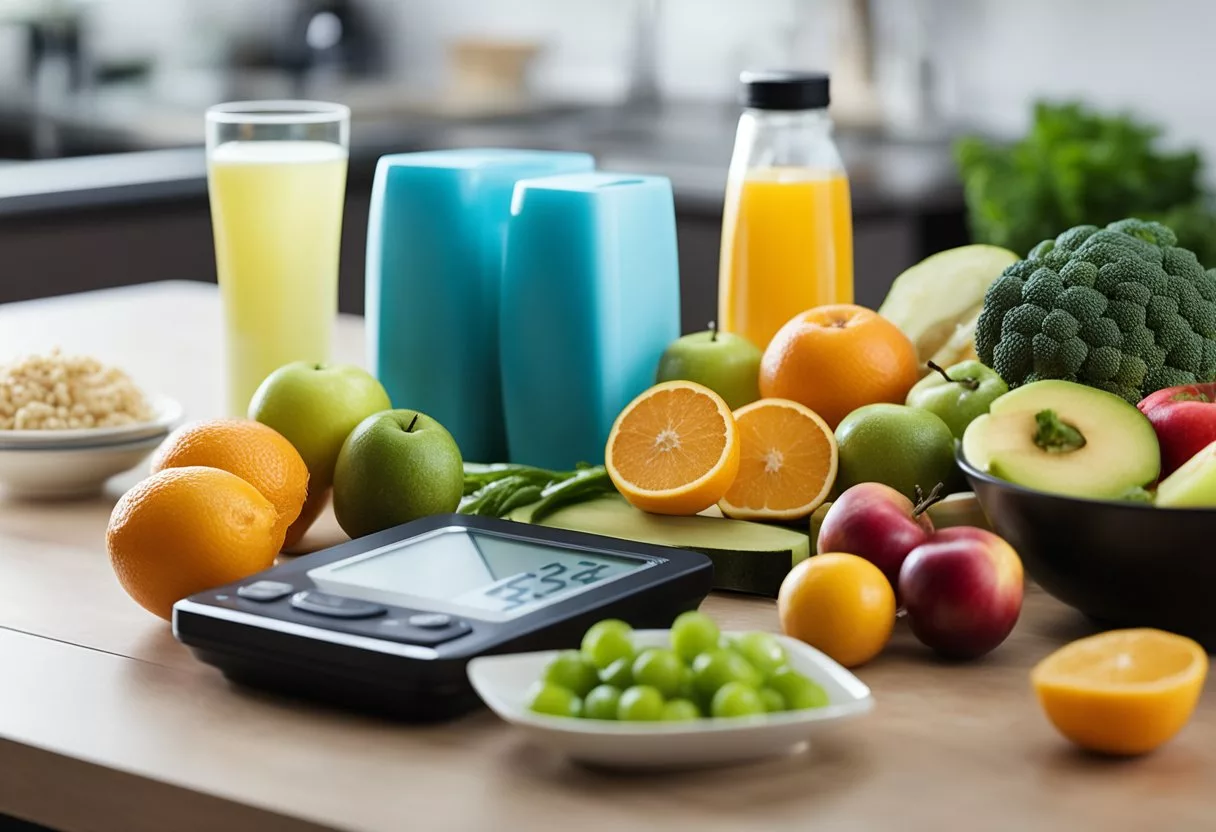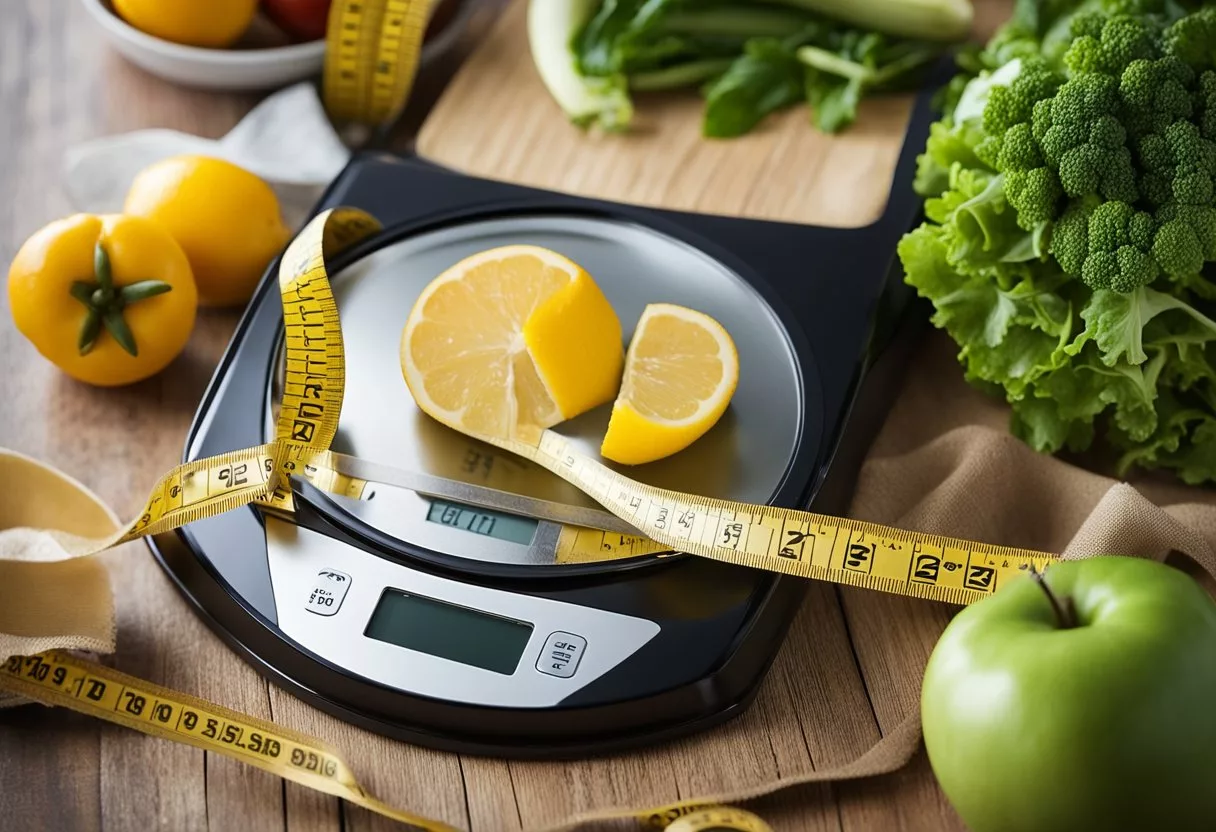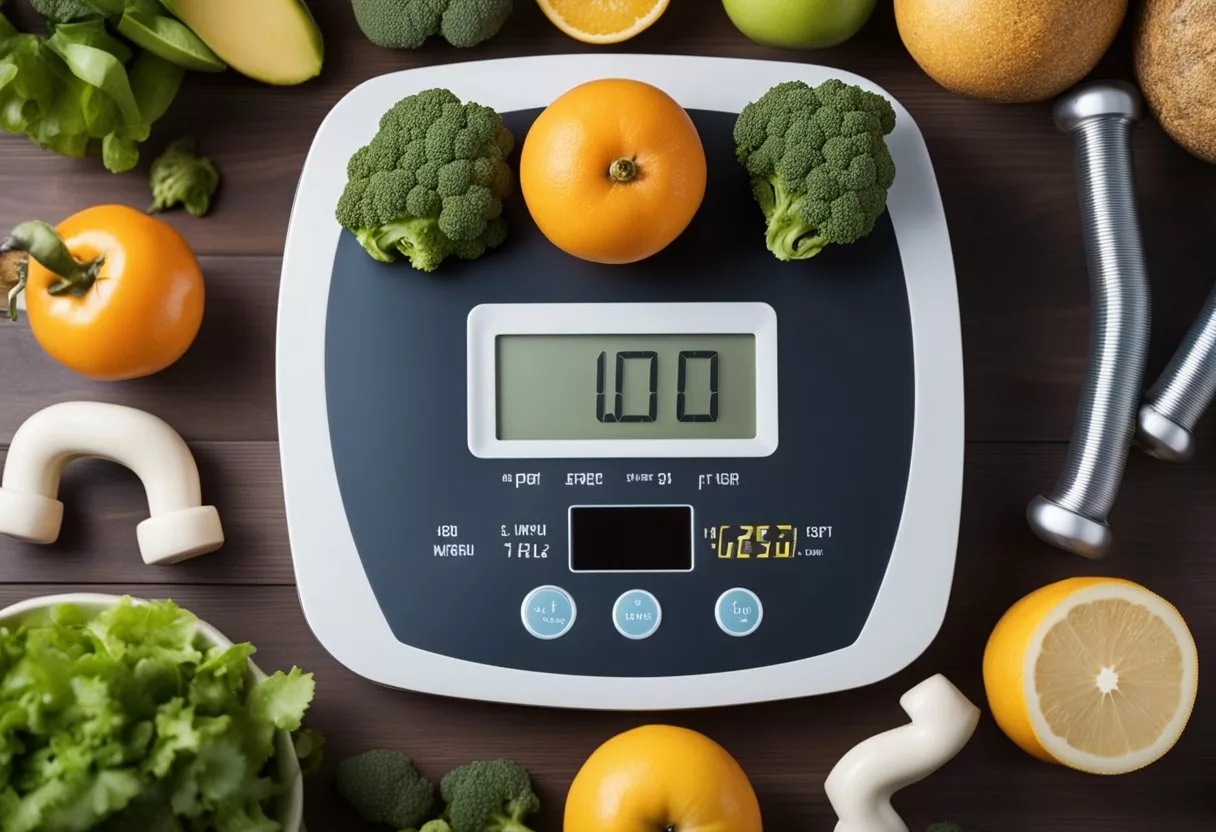Struggling with stubborn face fat can be frustrating, but there are effective ways to address it. Cardio exercises and a balanced diet are key to losing face fat. Incorporating activities like running, cycling, or swimming can help burn calories and reduce overall body fat, which includes the face.

Another vital aspect is hydration. Drinking plenty of water can minimize bloating and puffiness, making your face look slimmer. Additionally, ensuring you get sufficient sleep is crucial; lack of sleep can lead to water retention and puffiness in the face.
To complement these lifestyle changes, consider adding facial exercises to your routine. These exercises can tone and strengthen facial muscles, contributing to a more defined appearance. By following these tips, you'll be on track to achieving a leaner face.
Key Takeaways
- Cardio and a balanced diet help reduce face fat.
- Hydration and sleep are important for minimizing puffiness.
- Facial exercises can tone and define facial muscles.
Understanding Face Fat
Facial fat can be influenced by multiple factors, such as genetics, hormonal changes, and the aging process. These factors can cause variations in fat distribution, leading to changes in the appearance of the cheeks and other areas of the face.
The Role of Genetics
Genetics play a significant role in determining where the body stores fat, including in the face. Some people inherit traits that lead to more facial fat, making their cheeks appear fuller. This genetic predisposition can also affect the overall shape of the face, making it more round or angular. Individuals with a family history of facial fat may find it harder to lose weight in this area, regardless of diet and exercise. Genetic factors can also influence how the skin holds onto fat, contributing to a plump or puffy appearance.
Hormonal Factors
Hormonal imbalances can contribute to facial fat accumulation. Hormones like cortisol, which is released during stress, can lead to weight gain and puffiness in the face. High levels of insulin, often caused by poor diet or metabolic issues, can also result in increased fat storage in facial areas. Additionally, fluctuations in estrogen and testosterone levels can affect fat distribution. For example, women undergoing menopause may notice changes in facial fat due to reduced estrogen levels. Monitoring and managing hormone levels through a balanced diet and lifestyle can help mitigate these effects.
Effects of Aging
Aging naturally affects facial fat distribution. As people age, the skin loses elasticity and the underlying fat pads in the cheeks begin to shift and sag. This can result in a hollowed look in some areas of the face, while other areas may appear more puffy due to fat displacement. Aging also slows down metabolism, which can lead to overall weight gain and increased facial fat. Additionally, reduced collagen production contributes to less firm skin, making any existing facial fat more noticeable.
By understanding these factors, individuals can better address facial fat through targeted lifestyle changes and, if necessary, medical interventions.
Dietary Adjustments for Fat Loss

Making dietary changes can help reduce face fat. These adjustments include creating a calorie deficit, staying hydrated, reducing salt and processed foods, and including fiber-rich foods. Each of these steps supports overall weight loss and helps to slim down the face.
Creating a Calorie Deficit
To lose fat, it’s essential to burn more calories than consumed. This can be achieved by eating smaller portions and choosing nutrient-dense foods that are low in calories but high in nutrients. Foods like lean protein, vegetables, and whole grains can fill you up without adding extra calories.
Tracking daily calorie intake can help stay within the deficit needed for weight loss. Avoid high-calorie, low-nutrient foods such as sugary snacks and drinks. Instead, he or she should focus on meals rich in nutrients to support health and keep hunger at bay.
Importance of Hydration
Drinking plenty of water helps maintain overall health and aids in losing facial fat. Staying hydrated can reduce water retention and bloating in the face. It also helps control appetite by making one feel fuller, which can assist in managing calorie intake.
Aim to drink at least eight cups of water daily. Consuming water-rich foods like cucumbers, oranges, and watermelon can also contribute to hydration. This not only hydrates but also provides necessary nutrients for a balanced diet.
Reducing Salt and Processed Foods
High salt intake leads to water retention, making the face appear puffier. Processed foods often contain high levels of sodium and should be limited. Reducing salt in the diet can decrease bloating and result in a slimmer face.
Opt for fresh, whole foods instead of packaged and processed ones. Reading labels to check sodium content can help make better choices. Cooking at home allows one to control salt levels more effectively, ensuring a healthier diet.
Including Fiber-Rich Foods
Fiber-rich foods are crucial for weight loss and overall health. Whole grains, fruits, vegetables, and legumes fill you up without many calories. These foods improve digestion and prevent overeating by promoting a feeling of fullness.
Including a variety of fiber sources ensures a balanced diet. For instance, apples, berries, broccoli, and beans are excellent choices. Consuming these regularly can help maintain a healthy weight and reduce facial fat.
Incorporating these dietary adjustments can effectively support a healthier lifestyle and aid in losing facial fat.
Exercise for Face and Body

Losing fat in the face and body involves a balanced approach that includes cardiovascular exercises, strength training, and targeted facial exercises. Consistency and a well-planned routine are crucial for effective results.
Cardiovascular Exercises
Cardiovascular exercises, or cardio, are excellent for overall fat loss, which includes reducing fat in the face. Activities like running, cycling, and swimming increase the heart rate and boost metabolism.
Cardio helps burn calories and can create a calorie deficit, essential for fat loss. Experts recommend at least 150 minutes per week of moderate-intensity cardio. Brisk walking and using an elliptical machine are also good options.
Engaging in cardio not only helps shed body fat but can also improve heart health and stamina.
Strength and Resistance Training
Strength training is vital for building muscle and increasing metabolism. As muscle mass increases, the body burns more calories even at rest. This type of exercise includes weightlifting, resistance bands, and body-weight exercises like push-ups and squats.
Strength training can be done at home or in the gym. Incorporating exercises like deadlifts and bench presses can target multiple muscle groups, making workouts efficient. Strength training should be done 2-3 times per week, focusing on different muscle groups each session.
Regular strength training helps tone muscles and can contribute to fat loss, including in the face and neck.
Targeted Facial Exercises
Facial exercises can help tone muscles in the face. Specific exercises target areas like the cheeks, jaw, and neck. For example, the cheekbone lift involves sitting straight, lifting the cheeks towards the eyes, and holding the position for a few seconds.
Another effective exercise is the jaw release, which involves moving the jaw in a chewing motion while keeping the lips closed. Smiling wide and holding the position can also help strengthen facial muscles.
Performing these exercises daily can enhance muscle tone in the face and reduce fat over time.
Consistency and Routine
Consistency in exercise routines is key to seeing long-term results. Establishing a regular schedule that includes a mix of cardio, strength training, and facial exercises is essential.
Setting realistic goals and tracking progress can help maintain motivation. It’s important to start slowly and gradually increase the intensity and duration of workouts. Ensuring a balanced diet and staying hydrated also support the effectiveness of these exercises.
Consistency helps in building habits and achieving desired outcomes in both body and facial fat reduction.
Lifestyle Modifications
Making changes in daily routines can significantly help reduce face fat by targeting overall health and well-being.
Adequate Sleep
Getting enough sleep is essential. Lack of sleep can lead to increased levels of cortisol, a stress hormone that can contribute to weight gain including in the face. Aim for 7-9 hours of sleep each night. This helps the body function optimally and supports metabolic health. A consistent sleep schedule can also improve the quality of sleep. Avoid caffeine and electronic devices before bedtime to enhance sleep quality.
Managing Stress
Chronic stress can lead to elevated cortisol levels which may cause weight gain, especially around the face and abdomen. Techniques such as meditation, yoga, and deep breathing exercises can be effective in lowering stress levels. Regular physical activity also helps in managing stress. Setting aside time each day for relaxing activities can make a significant difference.
Alcohol and Beverage Intake
Reducing alcohol intake is crucial as alcohol can cause dehydration and bloating, making the face appear puffier. Opt for water and other healthy beverages instead. Staying hydrated by drinking plenty of water can help reduce facial bloating. Limiting sugary drinks is also important as they can contribute to weight gain and inflammation. Aim to drink at least eight glasses of water daily.
Regular Doctor Check-ups
Regular check-ups can help monitor overall health and catch any underlying issues that might contribute to facial weight gain. A doctor can provide personalized advice based on individual health needs. They might recommend lifestyle changes, dietary adjustments, or even medications if necessary. Keeping track of health metrics like blood pressure, cholesterol, and weight can guide effective face fat reduction strategies.
Addressing Medical Conditions

Medical conditions can significantly impact the amount of facial fat. Consulting healthcare professionals and investigating hormonal imbalances, as well as understanding the effects of medications, are crucial steps.
Consulting Healthcare Professionals
Prior to making any changes, it's vital to consult with healthcare professionals. They can identify underlying health issues such as hypothyroidism or fluid retention that may contribute to facial fullness.
A professional can create personalized plans to manage weight and facial fat. They might suggest routine tests to check for any hormonal imbalances. Regular check-ups ensure any inflammation or swelling is monitored and managed effectively.
Key points healthcare professionals may address include:
- Identifying medical causes of facial fat.
- Providing tailored dietary and exercise recommendations.
- Monitoring progress and adjusting plans as needed.
Investigating Hormonal Imbalances
Hormonal imbalances can play a significant role in facial fat. Conditions like hypothyroidism can lead to weight gain and facial fullness. It is important to have hormone levels checked if suspecting these issues.
Hormonal issues can affect appetite and hunger, leading to an increase in caloric intake. An imbalance in hormones such as cortisol, insulin, or thyroid hormones can also cause fluid retention and weight gain.
Strategies to manage hormonal imbalances:
- Regular blood tests to monitor hormone levels.
- Medications prescribed by healthcare professionals.
- Dietary adjustments to balance hormones naturally.
Understanding Effects of Medications
Certain medications may cause facial fat accumulation. Steroids and some antidepressants are known to affect weight and fluid retention, which can lead to a fuller face.
If you notice facial fat developing after starting a new medication, consult with the prescribing doctor. They might adjust the dosage or switch to a different medication that has fewer side effects related to weight and facial swelling.
Considerations when dealing with medication-induced facial fat:
- Reviewing all current medications with a doctor.
- Being open to possible changes in medication.
- Monitoring any changes and reporting them promptly to healthcare providers.
Enhancement Techniques
Enhancement techniques for losing face fat include both cosmetic procedures and natural methods. These techniques can help in reducing facial bloating and aid in slimming down the face.
Cosmetic Options
Cosmetic procedures can offer quick and targeted results for reducing face fat. Facial liposuction involves removing fat using a thin tube and vacuum, offering immediate results. This method can effectively slim down the face but requires recovery time. Buccal fat removal is another popular option, where fat from the buccal pad region (between cheek and jaw bones) is surgically removed to create a more contoured look. While effective, these procedures come with higher costs and the risks associated with surgery.
Another option is cool sculpting, a non-invasive procedure that freezes and breaks down fat cells. It’s a less intensive option compared to surgical methods but may require multiple sessions for noticeable results. Always consult with a qualified medical professional to discuss which option suits individual needs best and to understand potential risks.
Natural Methods for Facelift
Natural methods can also help reduce facial fat and improve overall appearance. Facial massages, including techniques using tools like gua sha, can enhance blood circulation and reduce bloating. Regular facial massage can stimulate lymphatic drainage, helping to remove excess fluids and decrease puffiness. Hydration is crucial—drinking adequate water helps flush out toxins and reduces facial bloating.
Diet and exercise play significant roles too. Reducing carbohydrate intake, focusing on whole foods, and regular aerobic exercise can contribute to overall fat loss, which includes the face. Specific facial exercises, though not significantly impactful, can tone facial muscles when combined with a healthy lifestyle. These natural methods are low-cost, low-risk, and can be easily integrated into daily routines.
Monitoring Progress

Losing face fat requires consistent effort and monitoring. Regularly checking progress helps in adjusting strategies to achieve better results.
Tracking Changes Over Time
To monitor fat loss in your face, it is important to measure and assess your progress regularly. Take weekly photos from the same angles to compare changes more clearly. These visual records show the reduction in fat deposits.
Keep a journal to note changes in face size and any bloating. Record activities like exercise routines and dietary habits, as well as any specific exercises like clenching and facial workouts.
Tracking weight can reveal if overall body weight loss impacts facial fat. This can be a sign that your efforts to lose weight in your face are working. Celebrating small victories can keep motivation high and encourage continued active engagement.
Summary

Losing face fat involves a combination of healthy habits and lifestyle changes. Cardio exercises are effective in promoting fat loss across the body, including the face.
Facial exercises such as puffing the cheeks, smiling, or puckering the lips can tone facial muscles.
Hydration is crucial. Drinking water helps reduce puffiness and bloating by decreasing fluid retention. For more details, read Greatist's guide.
Healthy diet: Consuming fresh whole foods and maintaining a balanced diet can aid in weight loss. Increasing nutrient intake while reducing calories is beneficial. Learn more about this approach on Medical News Today.
Sleep: Getting at least 8 hours of sleep supports overall health and helps prevent facial bloating. Consistent sleep patterns are essential.
Surgical options: For quicker results, options like facial liposuction and buccal fat removal can remove fat from the face. These procedures must be done by professionals. Insights about these methods can be found on Forbes Health.
Combining these strategies can effectively help in reducing face fat and achieving a more defined facial appearance.
Be patient and consistent for the best results.
Frequently Asked Questions

The topics below cover effective exercises, dietary changes, and the role of cardiovascular workouts in losing face fat.
Are there effective facial exercises for slimming the face?
Facial exercises can help tone muscles and reduce fat. Practices like chin lifts, jaw releases, and cheek puffing are commonly recommended. These exercises can enhance facial contours and might contribute to a slimmer face.
What are the fastest ways to reduce facial fat?
Combining a healthy diet with regular exercise is key. Cardio workouts are important for burning calories. Staying hydrated, reducing salt intake, and avoiding processed foods can also support fat loss.
Can cardiovascular workouts help in losing fat from the face?
Yes, cardiovascular workouts such as running, cycling, or swimming can aid in overall fat reduction, including the face. Increased heart rate during these activities boosts metabolism and helps burn fat efficiently.
What dietary changes can aid in slimming down a chubby face?
Eating whole, nutrient-rich foods like vegetables, fruits, and lean proteins can help. Reducing sugar and salt intake is beneficial. Staying hydrated by drinking enough water each day can also reduce water retention in the face.
Is it possible to lose face fat while overall body weight is low?
Yes, even individuals with low overall body weight can lose face fat by focusing on facial exercises and maintaining a balanced diet. Ensuring that the diet is low in unhealthy fats and sugars can make a difference.
How to achieve a more defined jawline through fat reduction?
Achieving a more defined jawline involves a combination of facial exercises and general fat-loss strategies. Regularly practicing chin lifts and jaw releases, along with maintaining a healthy diet and engaging in cardio workouts, can improve jawline definition.